The AMD Radeon RX Vega 64 & RX Vega 56 Review: Vega Burning Bright
by Ryan Smith & Nate Oh on August 14, 2017 9:00 AM ESTDawn of War III
A Dawn of War game finally returns to our benchmark suite, with its predecessor last appearing in 2010. With Dawn of War III, Relic offers a demanding RTS with a built-in benchmark; however, the benchmark is still bugged, something noticed by Ian, as well as by other publications. The built-in benchmark for Dawn of War III collects frametime data for the loading screen before and black screen after the benchmark scene, rendering the calculated averages and minimum/maximums useless. While we used the benchmark scene for consistency, we used OCAT to collect the performance data instead. Ultra settings were used without alterations.
A note on the 1080p results: further testing revealed that Dawn of War III at 1080p was rather CPU-bound on our testbed, resulting in anomalous performance. Due to the extreme time constraints, we discovered and determined this very late in the process. For the sake of transparency, the graphs will remain as they were at the time of the original posting.
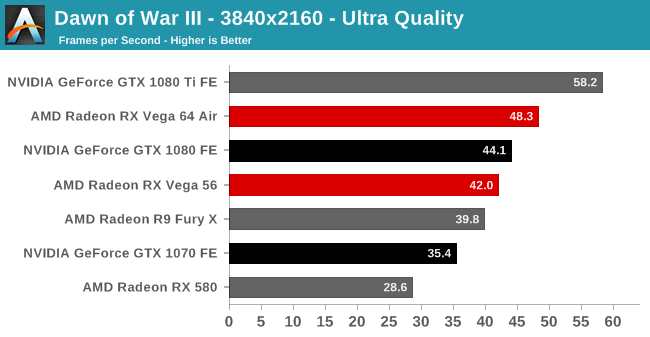
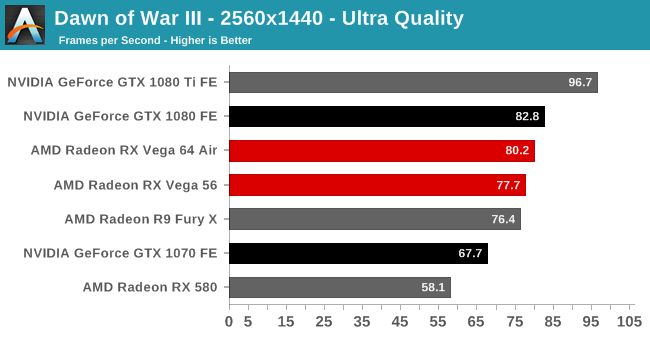
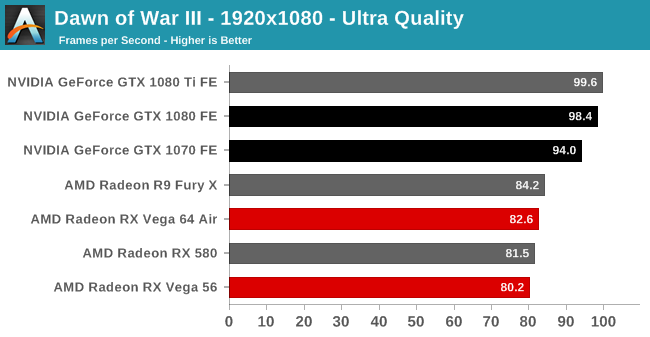

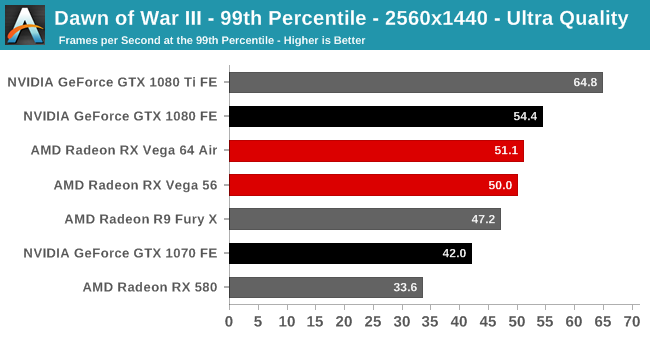
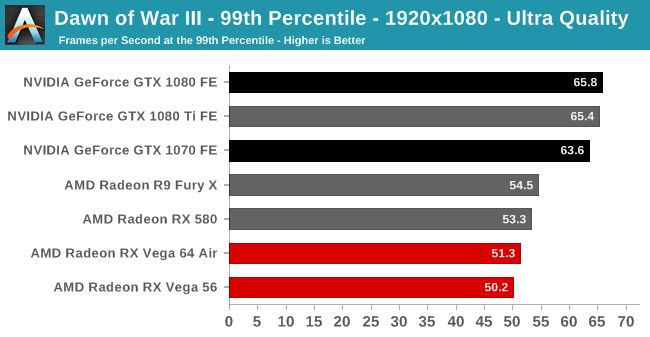










213 Comments
View All Comments
bcronce - Monday, August 14, 2017 - link
Exactly. I REALLY want to run my games in a VM guest.sutamatamasu - Monday, August 14, 2017 - link
In RTG slide on architecture side. Vega have some MB SRAM. Can you tell me what this SRAM use for?DanNeely - Monday, August 14, 2017 - link
Various caches and internal buffers; on die memory is normally SRAM because it's several times faster than DRAM. (DRAM is several times denser since it only uses 1 transistor/bit vs the 4(?) for SRAM; which is why its used for main memory where total capacity is more important - and where the data bus is the main latency source anyway.) I'd be curious what the breakdown is since only 4MB if it's in the L2 cache.sutamatamasu - Monday, August 14, 2017 - link
Yes, same with me. Like we all know GCN 5 has no change on L2 Cache size but i am curious, AMD say this SRAM and L2 Cache size differently.extide - Monday, August 14, 2017 - link
A lot of it is going to be in the low level L1 caches and stuff local to the shaders -- there are a lot of shaders, so it will add up fast. GCN 5 does have double L2 cache, at least according to this article, 4MB vs 2MB. AMD says there is a total of over 45MB of SRAM on there, which is pretty impressive for a GPU!ratbuddy - Monday, August 14, 2017 - link
I'm disappointed that Vega Frontier results were not included in the benches :-/Ryan Smith - Monday, August 14, 2017 - link
AMD did not sample that card, and there's not much of a reason for us to include it now when the RX Vega is faster.Nfarce - Monday, August 14, 2017 - link
Another Fury X fail. You'd have to be a hard core AMD fan to buy this over a GTX 1080, and that's not even taking into consideration the horrid power use compared to the 1080. Isn't that what AMD fans tell us is so important when comparing Ryzen to i7 CPUs in core/watt performance? Amazingly they are silent here.IchiOni - Monday, August 14, 2017 - link
I do not care about power consumption. Only poor people care about power consumption. I will be purchasing an air cooled Vega 64.Hurr Durr - Monday, August 14, 2017 - link
So Barnum was right in the end.